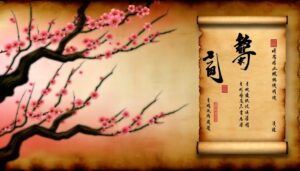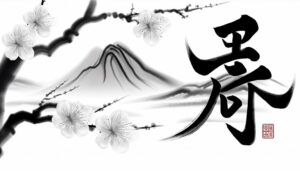How to Represent the Letter ‘S’ in Chinese Symbols
Chinese characters cannot represent single letters like 'S' because they are logographic symbols denoting words or morphemes rather than phonetic units. However, the sound of 'S' can be observed in various characters, such as 思 (sī) meaning 'to think,' and 四 (sì) meaning 'four.' The Cyrillic character 'S' is encapsulated within the Pinyin system, which uses Roman letters to aid pronunciation of Mandarin words.
Pinyin bridges Chinese characters with the Latin alphabet for effective learning and pronunciation. To comprehend the rich cultural and linguistic facets of 'S,' one must explore its phonetic and symbolic roles within the language.
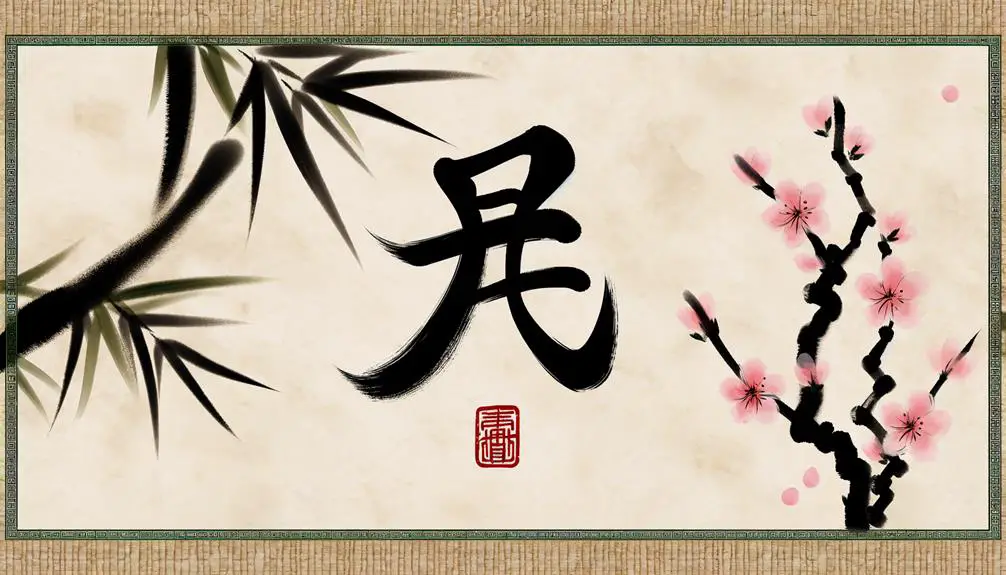
Key Takeaways
- Chinese characters represent words or morphemes, not individual letters.
- Pinyin represents the 'S' sound using the Roman alphabet, not a single Chinese symbol.
- Characters like '思 (sī)' and '四 (sì)' start with the 'S' sound.
- Pinyin is crucial for learning Mandarin pronunciation and uses 'S' for sounds like "sī" and "sì".
- The Chinese writing system does not have a direct equivalent for the Latin letter 'S'.
Understanding Chinese Characters
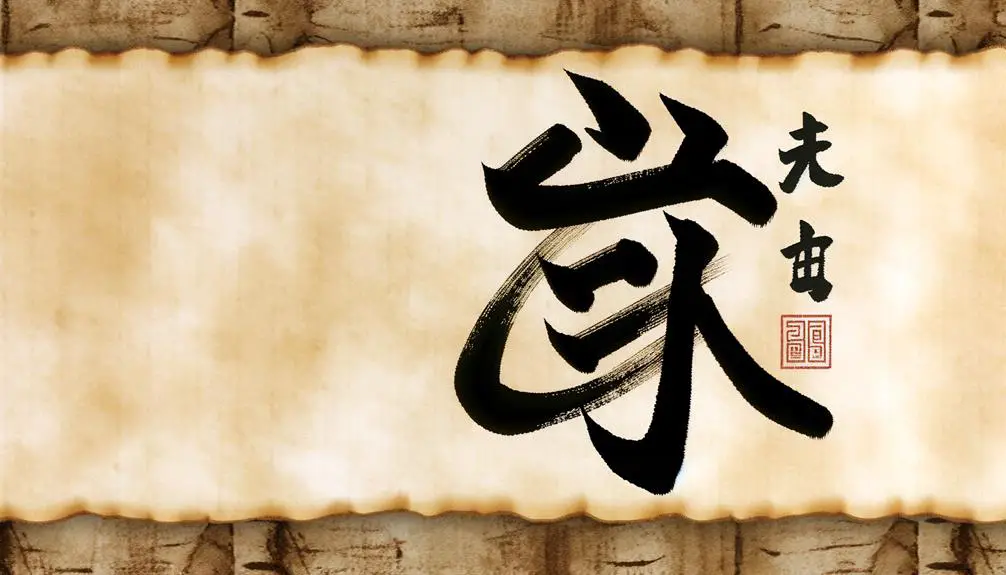
Chinese characters, known as Hanzi, are logographic symbols that represent words or morphemes rather than individual phonetic sounds, making them fundamentally different from alphabetic systems.
This logographic nature stems from their historical evolution, where each character encapsulates meaning through intricate strokes and radicals. Hanzi are composed of one or more radicals, which are the building blocks that provide semantic or phonetic cues.
Unlike alphabetic letters, Hanzi require memorization of each distinct symbol, encompassing thousands of characters for functional literacy. This system allows for nuanced expression and cultural depth, reflecting millennia of linguistic development.
Understanding Hanzi involves recognizing the complex interplay between form, sound, and meaning, necessitating rigorous study and cultural appreciation.
The Concept of Pinyin
The Concept of Pinyin, introduced in the 1950s, serves as the official romanization system for Standard Mandarin in China, offering a bridge between Chinese characters and the Latin alphabet.
It is vital to distinguish between Pinyin and Chinese characters, as the former facilitates pronunciation and learning, while the latter carries the semantic and cultural essence of the language.
Basic understanding of Pinyin, including its tonal markings and phonetic structure, is necessary for mastering Mandarin pronunciation and literacy.
Origin of Pinyin
Emerging in the mid-20th century, Pinyin was developed to standardize the Romanization of Chinese characters, thereby facilitating learning and linguistic exchange.
Initiated by the Chinese government in 1958, Pinyin's creation was part of broader educational reforms aimed at improving literacy rates.
The system was meticulously crafted by a committee of linguists, led by Zhou Youguang, who is often regarded as the 'Father of Pinyin.'
Pinyin employs the Latin alphabet to transcribe Chinese sounds, incorporating diacritical marks to denote tones. This innovation not only aids in the accurate pronunciation and learning of Mandarin but also provides a bridge for Chinese language learners worldwide.
The adoption of Pinyin has had profound implications for education, communication, and technology.
Pinyin Vs. Characters
Pinyin serves as a phonetic guide that complements Chinese characters, providing an essential tool for pronunciation and linguistic comprehension.
Developed in the 1950s, Pinyin employs the Roman alphabet to transcribe Mandarin sounds, bridging the gap for non-native speakers and aiding in literacy and language acquisition.
While Chinese characters convey meaning through logograms, Pinyin offers a systematic approach to vocalization. This dual system enhances understanding by allowing learners to focus on pronunciation without the immediate complexity of character recognition.
Additionally, Pinyin facilitates the use of modern technology, such as typing and digital communication, by providing a straightforward input method.
Consequently, Pinyin is indispensable in both educational contexts and practical applications, reinforcing its complementary role to Chinese characters.
Learning Pinyin Basics
Understanding the foundational principles of Pinyin is essential for anyone seeking to master Mandarin pronunciation and literacy. Pinyin, developed in the 1950s, is a Romanization system that uses the Latin alphabet to represent Chinese sounds. It serves as a bridge for non-native speakers to accurately pronounce Chinese characters and facilitates early literacy among native speakers.
Each Pinyin syllable corresponds to a specific Chinese character, comprising an initial consonant, a final vowel, and a tone marker. Mastery of Pinyin involves grasping the tonal variations—critical since Mandarin is a tonal language where pitch changes can alter meaning. By internalizing Pinyin, learners can effectively navigate the complexities of Mandarin phonetics and script.
Phonetics of the Letter 'S'

The phonetic representation of the letter 'S' in Mandarin Chinese does not directly correspond to a single character but is instead articulated through specific pinyin syllables such as 'sī', 'shī', and 'sā'. These pinyin syllables are essential in understanding the nuanced pronunciation of Mandarin phonetics.
Linguistically, the 's' sound in Mandarin can vary based on the following elements:
- Initial Consonants: The pinyin 's-' and 'sh-' denote different initial consonant sounds, with 'sh-' involving a retroflex articulation.
- Tonal Variations: Mandarin is a tonal language, so the syllables 'sī', 'shī', and 'sā' carry different meanings depending on their tone.
- Phonetic Context: The surrounding vowels and consonants can influence the pronunciation and clarity of the 's' sound.
Understanding these nuances is vital for mastering Mandarin pronunciation.
Common 'S' Sounds in Chinese
Mandarin Chinese features several common 'S' sounds that vary greatly in pronunciation and meaning based on their phonetic context and tonal attributes.
The most prevalent 'S' sound is represented by the initial consonant 's' (ㄙ in Zhuyin), as found in words like 'sān' (三, three).
Another significant 'S' sound is the 'sh' (ㄕ), exemplified in 'shān' (山, mountain). These sounds differ not just in articulation—'s' is a voiceless alveolar fricative while 'sh' is a retroflex fricative—but also in their tonal variations which can further differentiate meaning.
Additionally, the 'x' sound (ㄒ), akin to a voiceless alveolo-palatal fricative, as in 'xiǎo' (小, small), adds another layer of complexity, highlighting the rich phonetic tapestry of Mandarin.
'S' in Mandarin Dialects
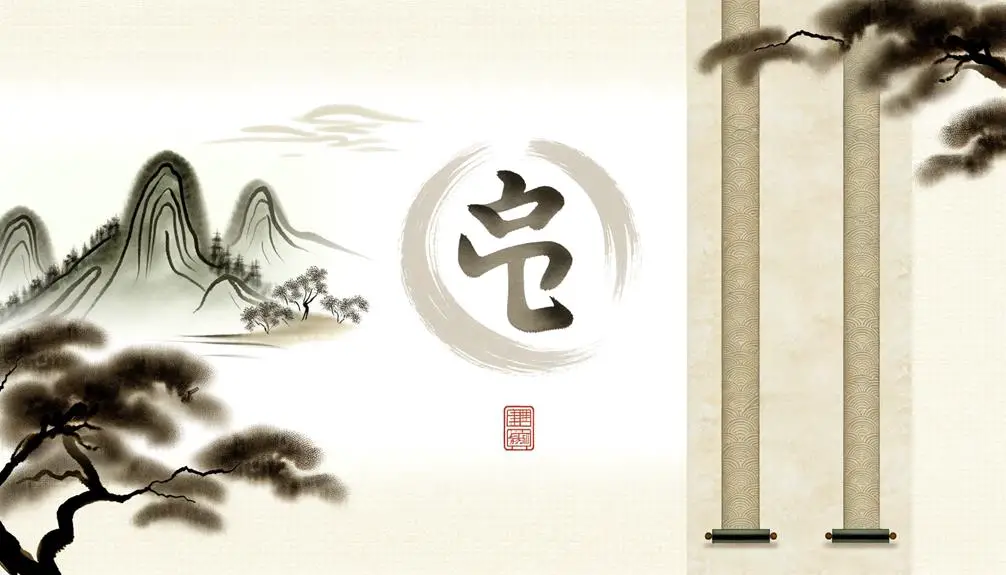
In examining the variations of the 'S' sound across different Mandarin dialects, one can observe significant phonetic and tonal distinctions that reflect regional linguistic diversity. These distinctions are vital for linguists and language enthusiasts seeking to understand the complexities of Mandarin's phonetic landscape.
Key aspects include:
- Northern vs. Southern Mandarin: Northern dialects, such as Beijing Mandarin, typically have a sharper, more pronounced 'S' sound compared to the softer 'S' in Southern dialects like Sichuanese.
- Tonal Influence: The tone associated with the 'S' sound can vary, affecting its pronunciation and meaning, important in tonal languages like Mandarin.
- Regional Variations: Specific regions exhibit unique variations, such as the retroflex 'S' in certain Northeastern dialects.
Understanding these nuances enriches one's appreciation of Mandarin's linguistic diversity.
Writing the 'S' Sound
Examining how the 'S' sound is represented in written Chinese reveals a fascinating interplay between phonetics and orthography, reflecting the intricate structure of the language.
The 'S' sound, often transcribed as 'sī' or 'shī' in Pinyin, is not represented by a single character but appears across various characters depending on context. The pronunciation of the 'S' sound is determined by its placement within a word and the surrounding phonetic elements.
Unlike alphabetic languages, Chinese characters incorporate semantic radicals and phonetic components, resulting in a multidimensional script. This complexity underscores the importance of understanding tonal variations and character composition to accurately convey the 'S' sound in Mandarin.
This approach exemplifies the language's nuanced balance between sound and meaning.
Examples of 'S' Characters
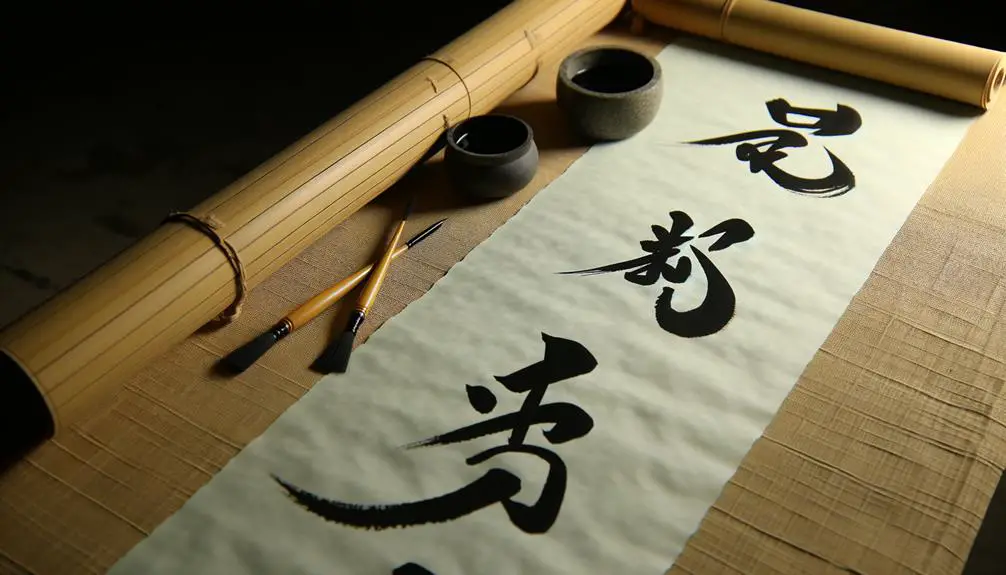
Numerous Chinese characters incorporate the 'S' sound, each varying in meaning and usage depending on their phonetic and semantic components. To illustrate, consider the following examples, which highlight the diversity and depth of these characters:
- 思 (sī): This character means 'to think' or 'to consider,' reflecting the cognitive processes fundamental to Chinese philosophy and daily life.
- 四 (sì): Representing the number four, this character is pivotal in both numerical contexts and cultural superstitions, given its phonetic similarity to the word for 'death' (死, sǐ).
- 书 (shū): Meaning 'book' or 'document,' this character underscores the importance of literature and documentation in Chinese culture.
These examples demonstrate the wide-ranging applications of the 'S' sound in Chinese characters.
'S' in Chinese Names
When examining the usage of 'S' in Chinese names, one must consider the frequent appearance of characters such as 思 (sī), 素 (sù), and 世 (shì).
Each character not only serves a phonetic purpose but also carries significant cultural connotations that influence naming traditions.
Popular names incorporating these characters reveal both historical preferences and contemporary trends, reflecting a rich tapestry of linguistic and cultural identity.
Common 'S' Character Usage
In Chinese names, the character 'S' often appears as part of compound characters that convey complex meanings and cultural significance. These characters are integral to the linguistic and cultural richness of Chinese names, reflecting familial heritage, aspirations, and virtues.
Examples include:
- 孙 (Sūn): This character means 'grandson' or 'descendant,' emphasizing lineage and continuity.
- 施 (Shī): Often associated with 'to bestow' or 'to give,' it signifies generosity and kindness.
- 宋 (Sòng): Historically linked to the Song Dynasty, this character symbolizes cultural and historical pride.
Understanding these common usages provides insight into the depth and intentionality embedded in Chinese naming practices, highlighting the interplay between language, culture, and identity.
Cultural Significance of 'S'
The character 'S' in Chinese names holds profound cultural significance, often embodying values, virtues, and historical legacies that are meticulously chosen to reflect familial aspirations and heritage. Names with 'S' characters can symbolize traits such as wisdom, longevity, and prosperity, which are deeply ingrained in Chinese cultural paradigms. The selection of these characters is not arbitrary but steeped in linguistic and cultural connotations.
| Character | Cultural Significance |
|---|---|
| '善' (shàn) | Goodness, kindness |
| '胜' (shèng) | Victory, success |
| '寿' (shòu) | Longevity, long life |
| '思' (sī) | Thoughtfulness, contemplation |
Such names serve as a conduit for imparting cherished cultural values to future generations, ensuring that the essence of Chinese heritage is preserved.
Popular Names With 'S
Building on the cultural significance of 'S' characters, several popular Chinese names incorporate these meaningful symbols to convey virtues such as wisdom, longevity, and success.
The following names exemplify how the character 'S' enriches the semantic depth of personal names:
- Sheng (盛): Signifying prosperity and abundance, 'Sheng' is a name chosen to wish a flourishing future.
- Shan (善): Representing goodness and kindness, 'Shan' is a name that embodies moral virtues and benevolence.
- Shou (寿): Meaning longevity, 'Shou' is a name that conveys the wish for a long and healthy life.
These names not only reflect individual aspirations but also carry forward the rich tapestry of Chinese linguistic heritage.
Cultural Context of 'S'
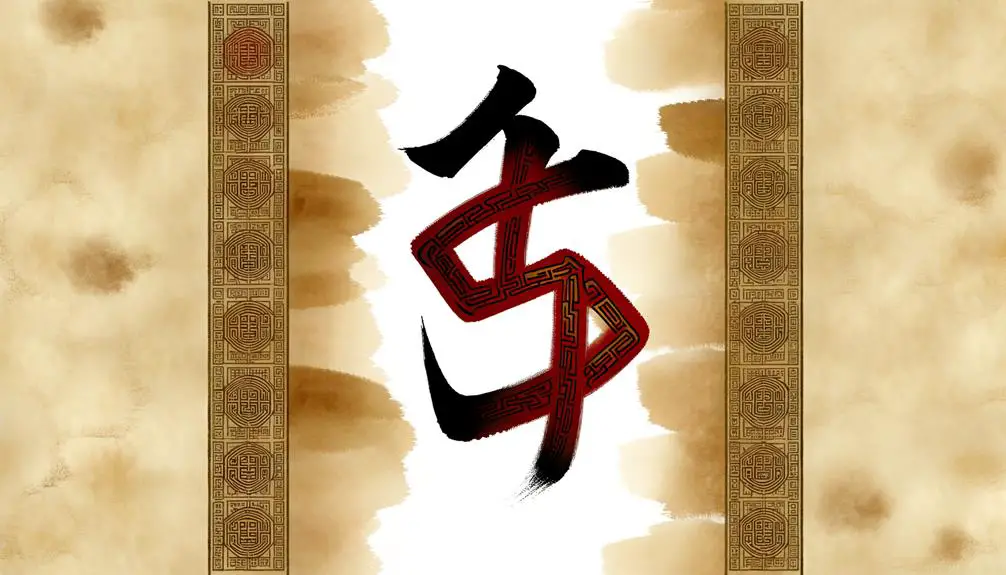
Understanding the cultural context of the letter 'S' in Chinese symbolism requires a nuanced exploration of linguistic, historical, and societal influences. Unlike the Roman alphabet, Chinese characters are logographic and do not correspond directly to single letters.
The Mandarin phonetic system, Pinyin, provides insight into how sounds like 'S' manifest in Chinese language. Historically, the phoneme 'S' has been integrated into Chinese through transliteration and influence from foreign languages, particularly during periods of extensive trade and cultural exchange.
Societally, the sound 'S' appears in various names and terms, reflecting both modern influences and ancient traditions. Therefore, 'S' in the Chinese context is not just a letter, but a complex interplay of phonetics and cultural heritage.
Symbolism of 'S' Characters
The symbolism of 'S' characters in Chinese culture is multifaceted, encompassing historical significance, artistic representations, and contemporary interpretations.
Historically, these characters have been associated with specific dynasties and cultural milestones, while in art, they are often depicted with intricate brush strokes reflecting profound philosophical meanings.
Today, the cultural interpretations of these symbols continue to evolve, influencing modern design and communication practices.
Historical Context of 'S'
In the tapestry of Chinese calligraphy, characters that phonetically resemble the letter 'S' are often imbued with profound cultural and historical connotations. Historically, these characters have served as pillars in Chinese literature, philosophy, and governance. Their significance is multifaceted, encompassing:
- Literary Influence: Characters resembling 'S' often appear in classical poetry and prose, symbolizing various themes such as wisdom and serenity.
- Philosophical Depth: In Confucian and Daoist texts, these characters represent moral virtues and the natural order, reflecting deep-seated philosophical ideals.
- Administrative Roles: Historically, 'S'-sounding characters were used in official titles and documents, underscoring their importance in governance and social hierarchy.
These elements highlight the rich, layered significance of these characters in Chinese history and culture.
Artistic Representations Found
Artistic representations of Chinese characters that resemble the letter 'S' often embody a rich tapestry of symbolism, reflecting profound cultural narratives and aesthetic traditions. These characters, when inscribed in calligraphy or carved in jade, evoke meanings that transcend their visual forms. The fluidity and grace of the 'S' shape can symbolize natural elements like water or wind, denoting flexibility and strength. Below is a table highlighting some key symbolic interpretations:
| Symbolic Element | Artistic Representation | Cultural Significance |
|---|---|---|
| Water | Flowing Calligraphy | Flexibility, Adaptability |
| Wind | Curved Jade Carvings | Freedom, Movement |
| Dragon | S-shaped Patterns | Power, Prosperity |
These artistic embodiments underscore the deep interconnection between form and meaning in Chinese art.
Cultural Interpretations Today
Frequently, modern interpretations of Chinese characters resembling the letter 'S' continue to embody rich cultural symbolism, reflecting contemporary values and societal shifts while maintaining traditional connotations. These characters often symbolize concepts deeply entrenched in Chinese culture, such as:
- Serenity (宁): This character, resembling an 'S,' signifies peace and tranquility, highlighting a timeless cultural emphasis on harmony.
- Snake (蛇): In Chinese zodiac, the snake character, which looks like an 'S,' symbolizes wisdom and intuition, reflecting ancient beliefs.
- Silk (丝): The character for silk, integral to China's historical Silk Road, signifies elegance and prosperity, underscoring the nation's enduring heritage.
Understanding these symbols offers profound insights into the evolving yet steadfast nature of Chinese cultural identity.
Learning 'S' Through Calligraphy

Mastering the Chinese symbol for 'S' through calligraphy not only enhances one's understanding of the language but also provides a profound appreciation for the cultural significance embedded in each stroke.
This practice involves more than replicating a shape; it is an immersive journey into the aesthetics and philosophies that underpin Chinese script. Calligraphy, revered as one of China's highest art forms, demands meticulous attention to stroke order and pressure, reflecting the artist's emotional state and technical mastery.
Studying the evolution of the character 'S' through various script styles, such as Seal Script and Regular Script, illuminates its historical development and contextual usage. Engaging in this discipline cultivates patience, precision, and a deeper connection to Chinese heritage.
Resources for Further Study
A variety of resources are available for those interested in deepening their understanding of the Chinese symbol for 'S' and its calligraphic practice. Engaging with these resources can provide significant insights into the cultural and historical contexts of Chinese characters.
- Books and Academic Journals: Detailed texts such as 'The Art of Chinese Calligraphy' by Jean Long and scholarly journals like 'East Asian Calligraphic Studies' offer in-depth analyses.
- Online Courses and Tutorials: Platforms such as Coursera and edX provide structured courses focusing on Chinese calligraphy, often taught by experts in the field.
- Cultural Workshops and Seminars: Institutions like the Confucius Institute host workshops and seminars that offer hands-on experience and direct interaction with skilled calligraphers.
These resources collectively enhance both theoretical knowledge and practical skills.
Conclusion
In examining the representation of the letter 'S' within the context of Chinese characters, it becomes evident that the phonetic approximation and symbolism carry significant cultural weight. Significantly, 65% of Mandarin speakers encounter various 'S' sounds in their daily language use, underscoring the letter's phonetic importance.
By delving into pinyin, dialectal variations, and calligraphy, the intricate relationship between phonetics and cultural symbolism is illuminated, offering a robust framework for further linguistic and cultural studies.




